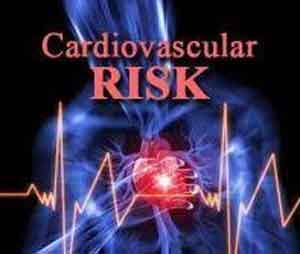- Home
- Editorial
- News
- Practice Guidelines
- Anesthesiology Guidelines
- Cancer Guidelines
- Cardiac Sciences Guidelines
- Critical Care Guidelines
- Dentistry Guidelines
- Dermatology Guidelines
- Diabetes and Endo Guidelines
- Diagnostics Guidelines
- ENT Guidelines
- Featured Practice Guidelines
- Gastroenterology Guidelines
- Geriatrics Guidelines
- Medicine Guidelines
- Nephrology Guidelines
- Neurosciences Guidelines
- Obs and Gynae Guidelines
- Ophthalmology Guidelines
- Orthopaedics Guidelines
- Paediatrics Guidelines
- Psychiatry Guidelines
- Pulmonology Guidelines
- Radiology Guidelines
- Surgery Guidelines
- Urology Guidelines
Mammography can also detect cardiovascular disease in females, suggests study

Mammography is a golden standard test for screening breast cancer in women. A new study published in the European Journal of Radiology suggests that not only breast cancer but mammography can also detect cardiovascular disease in women.
The study published in the journal demonstrated that mammography can be an excellent way to detect cardiovascular disease at the same time while screening for breast cancer. The test identifies breast arterial calcifications (BAC) which are associated with cardiovascular disease risk.
Breast arterial calcification (BAC) is a type of medial calcification easily detected on standard mammography. Evidence over the past several decades suggests that BAC correlates with the risk of cardiovascular disease (CVD). In addition, there has been a growing interest in whether the presence of BAC can improve cardiovascular risk assessments.
The study aimed to highlight the importance of quantitative breast arterial calcifications (BAC) assessment for an effective stratification of cardiovascular (CV) risk in women, for whom current preventive strategies are inadequate. BAC, easily detectable on mammograms, are associated with CV disease and represent a potential imaging biomarker for CV disease prevention in women.
A team of researchers from the Department of Biomedical Sciences for Health, Università Degli Studi di Milano, Italy reviewed 18 studies that explored the connection between breast arterial calcifications on mammography and cardiovascular disease.
Key Observation
- Age, parity, diabetes, and hyperlipidemia were found to positively correlate with BAC.
- Women with BAC have a higher CV risk than those without BAC: the relative risk was reported to be 1.4 for transient ischemic attack/stroke, 1.5 for thrombosis, 1.8 for myocardial infarction; the reported hazard ratio was 1.32 for coronary artery disease (CAD), 1.52 for heart failure, 1.29 for CV death, 1.44 for death from CAD.
- However, BAC does not alarm radiologists; when reported, they are commonly mentioned as “present”, not impacting on CV decision-making.
- Of 18 published studies, 9 reported only presence/absence of BAC, 4 used a semi-quantitative scale, and 5 a continuous scale (with manual, automatic or semiautomatic segmentation).
- Various appearance, topological complexity, and vessels overlap make BAC quantification difficult to standardize. Nevertheless, machine learning approaches showed promising results in BAC quantification on mammograms.
Summing up, the team concluded that there is a strong rationale for mammography to become a dual test for breast cancer screening and CV disease prevention. However, robust and automated quantification methods are needed for a deeper insight into the association between BAC and CV disease, to stratifying CV risk and define personalized preventive actions.
For reference, click on the link

Disclaimer: This site is primarily intended for healthcare professionals. Any content/information on this website does not replace the advice of medical and/or health professionals and should not be construed as medical/diagnostic advice/endorsement or prescription. Use of this site is subject to our terms of use, privacy policy, advertisement policy. © 2020 Minerva Medical Treatment Pvt Ltd